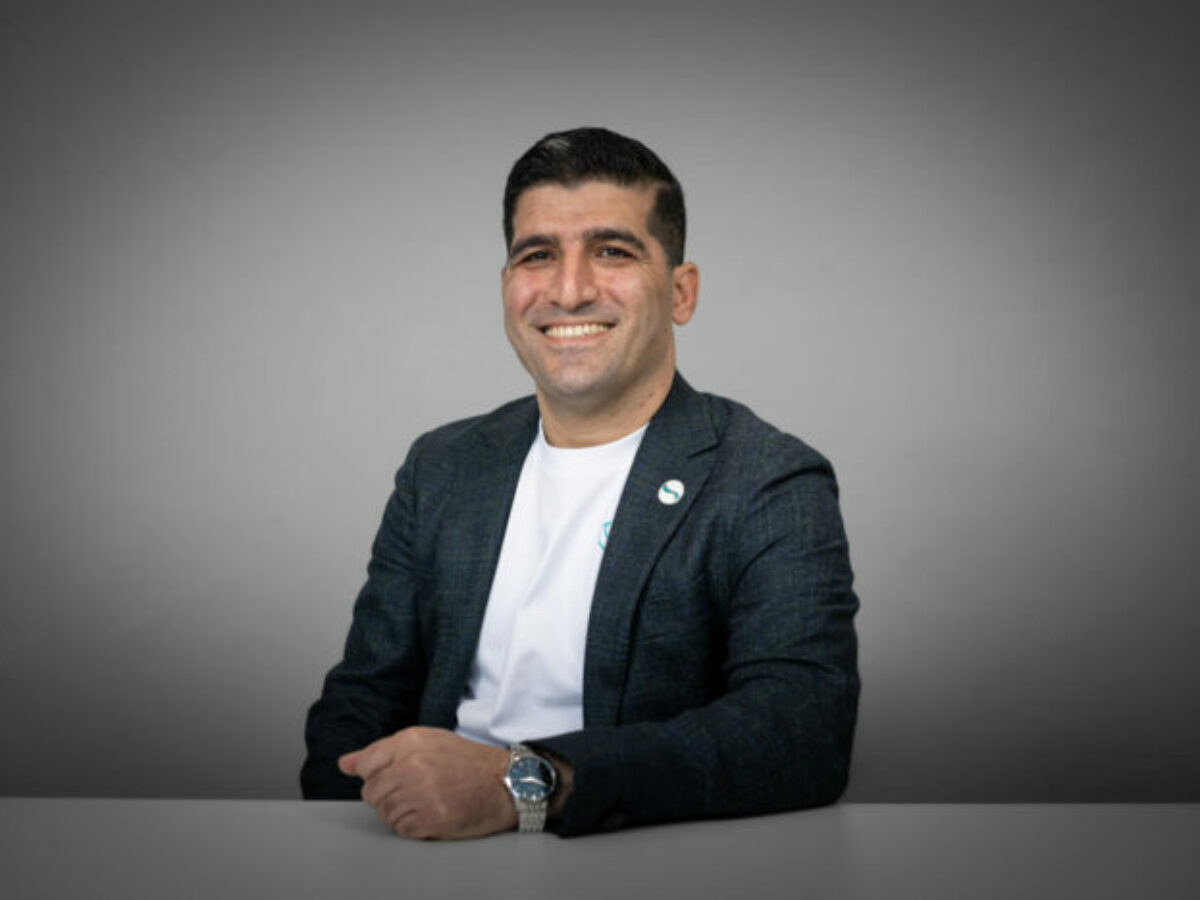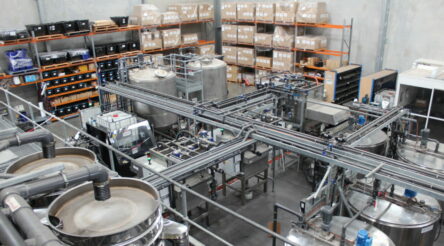Meet the researcher-turned-entrepreneur who says he’s cracked the innovation code

The second stop on our adventure to unearth Australia’s 50 Most Innovative Manufacturers is at Scimita Ventures. Founder Dr Mobin Nomvar tells Brent Balinski about his work commercialising energy, materials, and circular economy research.
Ask anybody who has taken scientific research and turned it into a commercial output and they’ll likely tell you that it’s a difficult and complex job.
Dr Mobin Nomvar is founder and Managing Director of research commercialisation specialist Scimita Ventures, which has completed over 40 projects relevant to the question since getting started.
He says there’s a lot that’s informed his approach, and there’s no shortage of detail in his explanation of what needs to happen for things to go right, but his standout point is on a golden rule.
“The Commercial Readiness Level must be at least equal to or one step ahead of the Technology Readiness Level,” he tells @AuManufacturing during a visit to the company’s office at St Peters, in Sydney’s inner west.
“But at the same time the CRL should not be too much ahead. Because then that causes a whole bunch of other problems.”
Do you think you belong on @AuManufacturing’s list of Australia’s 50 Most Innovative Manufacturers? Apply to be recognised in this exclusive group here.
Scimita counts corporates looking to improve their innovation prowess, as well as others assessing the viability and investment-appropriateness of new technologies, but the focus is on startups with their origins in university research.
Businesses are typically in the energy, materials, and circular economy industries. Technology has ranged from a process for recycling of fruit waste into a pectin product, to green hydrogen production based on novel catalysts, to a continuous blood glucose monitor, to a new way to recycle lithium batteries.
Some development work has been spun out into new companies, such as ScimTek Hydrogen (a joint venture with materials technology business Kinaltek) and Opuz (the vehicle for the glucose monitor.)
Nomvar founded Scimita with Professor Ali Abbas, a collaborator on chemical engineering research work at University of Sydney, about seven years ago.
 Abbas is Associate Dean of Research at University of Sydney’s engineering faculty, and holds roles including Director of the faculty’s Waste Transformation Research Hub, as well as the nation’s first Chief Circular Engineer.
Abbas is Associate Dean of Research at University of Sydney’s engineering faculty, and holds roles including Director of the faculty’s Waste Transformation Research Hub, as well as the nation’s first Chief Circular Engineer.
An up-close-and-personal example of the disconnect between the research and commercial worlds in 2016 was the seed for Scimita.
Nomvar was a postdoc researcher at the time, with projects that year including with biogas-to-hydrogen company Hazer.
“And my supervisor asked me ‘what do you want to focus on in your career?’ And I [told] her ‘Well, I’d really like to learn about commercialisation and capital raising,” he recalls, citing an entrepreneurial streak going back to 1995 and a previous life as a professional cyclist in Iran.
“I really had a vision that was to have my own business. But then when I shared that vision with her, she said ‘well, university is not built for that.’ And I paused for 15 seconds and then handed in my resignation.
“…We [then] started building an organisation that didn’t exist in Australia, to be ambitious, bold, rigorous, methodical and commercial, to take research out of [people’s] minds and put it in the market.”
Along the way, Scimita has developed its own execution framework, which it refers to as Falcon.
Nomvar describes his approach to innovation as informed by a wide collection of influences, including lean and agile methodologies, process engineering and neuroscience.
After years working the difficult beat of turning university work into products, processes and pecuniary value, Nomvar believes his team has cracked the “innovation code”.
As for what innovation itself “is”, he gives the below explanation.
“Innovation to me is when a new idea, whatever that is – it might be a purely commercial idea or a technical idea; when that is actually in the market and generating value in a way that people – users – are willing to give something in exchange for having it,” says the researcher-turned-entrepreneur.
“That’s innovation. It has to be new, in a context. People need to give something to have it – and that can be their time, their attention, their money, whatever. And it adds value. That’s, to me, innovation.”
In this episode of @AuManufacturing Conversations with Brent Balinski, Nomvar tells us about how to turn risks into realistic milestones, focussing projects on a commercial outcome, why his work once required him to breed bedbugs, and more.
Episode guide
0:51 – What Scimita does, including development work in battery recycling, hydrogen, copper, and critical mineral processing.
3:18 – A background in chemical engineering, energy systems engineering, elite cycling and elsewhere, plus what brought him to Australia from Iran.
5:55 – Why 2016 was an important year, and why he quit academia.
8:35 – Cracking the innovation code, beginning with a process engineering approach.
9:40 – Even really smart people can be sucked into a black hole, where there is too wide a range of options.
11:00 – Matching TRL with CRL and why that matters.
12:02 – The golden rule.
13:30 – Identifying risks early on and turning them into timelines.
14:20 – Some other readiness levels that get considered.
16:30 – A personal view of innovation.
18:20 – Successfully refocussing their business model after a downturn, leading to a contract with the Trailblazer for Recycling and Clean Energy (TRaCE)
20:00 – What is the issue we need to address to improve research commercialisation in Australia? It’s “a mismatch problem wrapped in complexity.”
23:02 – Why they do business out of the inner west suburb of St Peters. It comes down to travel and modularity.
24:08 – A project involving a monitoring device for bedbugs, which required them to breed and observe the “most important stakeholder” for the product onsite.
27:02 – Safety cannot be compromised in commercialisation projects.
28:24 – The rise of the circular economy in Australia and what needs to change (Scimita co-founder Professor Ali Abbas is Australia’s first Chief Circular Engineer, among other roles.)
29:50 – The circular economy is a very old concept, though current opportunities are immense.
30:34 – Circularity doesn’t actually guarantee sustainability.
31:35 – A look back at Nomvar’s PhD work on a tiny carbon capture device, which might have a business case one day, but “not on this planet, probably.”
34:00 – The many challenges involved in his doctoral work, not all of them technical, and the spinoff benefits of solving these.
35:20 – Some thoughts on risk appetite when it comes to investment and high-tech manufacturing in this nation.
36:20 – What the US gets right in encouraging high-tech businesses and what we lack.
37:50 – Scimita’s plans to help the innovation ecosystem here.
39:05 “This is a golden time for Australia… This is the fifth industrial revolution… It’s not going to come around again.”
40:05 – Government initiatives need to consult more closely with industry to understand innovation.
40:45 – “I think we as a nation need to have a very open, thoughtful discussion about what manufacturing means to Australia, given that our labour costs are high. And we want [them] to be high, because that’s part of the prosperity conversation. But it also means we have to be a lot smarter about what we are manufacturing and how we are marketing that.”
Australia’s 50 Most Innovative Manufacturers is an annual campaign by @AuManufacturing. It has been made possible through the generous support of MYOB, CSIRO, the NSW government’s Advanced Manufacturing Research Facility, and the Commonwealth Bank. Be sure to check back at this website for regular updates, including profiles of nominees and other information.

@aumanufacturing Sections
Analysis and Commentary Awards Defence Manufacturing News Podcast Technology Videos










